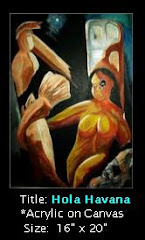
In the 1960s there was a concept known as a `happening’, which started out to mean a performance, or event meant to be considered `art’, but evolved into any `cool’ meet up of people or an event.
On television, the closest thing to a weekly `happening’ – one that everyone my age had to watch – was Rowan and Martin’s Laugh In.
While hardly an original concept, it was the right show at the right time for a television generation ready for something a little more risqué, a little more political, and that embraced the `youth culture’ of the 1960s.
Along the way, it turned a number of unknowns into stars. Goldie Hawn, Lily Tomlin, and Arte Johnson to name a few. Dick and Dan became overnight successes after only having been a comedy team for 15 years.
Laugh In quickly became `the show’ to get booked on. Big stars would work for scale (about $210) just to get a chance to be dropped through a trap door, or be doused with water.
John Wayne, Lena Horne, Liberace, Rock Hudson, Victor Borge, Bobby Darin, Rosemary Clooney . . . even Colonel Sanders appeared.
Laugh In was so popular, Presidential Candidate Richard Nixon made a guest appearance. He often credited his presidential win to appearing on the show.
Hubert Humphrey, his opponent, was offered a guest shot but declined.
But the Rowan and Martin story starts many years earlier, long before they were `king makers’.
Dan Rowan was born in 1922 aboard a carnival train, and performed a singing and dancing act with his parents until he was orphaned at the age of 11.
He graduated high school, hitchhiked to California, and got a job in the mailroom at Paramount Studios. In short order, he ingratiated himself with the studio head Buddy DeSilva, and within a year had been made the studio’s youngest staff writer.
During WWII he served as a fighter pilot, shot down two enemy planes, and was shot down and seriously wounded in the Pacific.
Dick Martin, also born in 1922, started his show business career as a staff writer on the radio show Duffy’s Tavern, which ran first on CBS, then NBC radio from 1941 to 1951.
In 1952 he would team up with Dan Rowan and do fairly a successful nightclub act. Comedy duos, of course, were very popular. Abbott & Costello, Martin & Lewis, Burns and Allen, Laurel & Hardy . . . the list goes on.
Rowan & Martin worked many of the variety shows of the 1950s and early 1960s, including hosting the Colgate Comedy Hour, but they never managed to make a big breakthrough.
In 1958, they made a movie called Once Upon A Horse, a western comedy that failed to jell at the box office, but that wasn’t as bad as it sounds. It also starred Martha Hyer, Nita Talbot, and Leif Erickson, and a young and uncredited Mary Tyler Moore as a dance hall girl.
In 1960, Rowan & Martin saw their contract canceled with NBC. Martin ended up playing Lucy’s next door neighbor for a couple of years in The Lucy Show, and he and Rowan returned to nightclubs in 1964.
Their big break came when they were tapped to host the summer replacement show for The Dean Martin Show in 1966. That exposure led to Laugh In, which premiered in January of 1968 and would run until March of 1973.
The rapid fire, pop-culture, youth oriented format of Laugh In owed more than a little of its pedigree to Burlesque, the blackout skits of TV’s first comedic genius Ernie Kovacs, and the political humor of That Was The Week That Was (TW3).
Dan was the straight man, to Dick’s dumb dora, playing the male equivalent of Gracie Allen. The show was hardly cerebral in content, but it was often `adult’ in tone.
Knock-knock jokes, double entendre’s (that drove the censors nuts), political jibes, and a stage full of trap doors were part of the comedic artillery used each week.
A `joke wall’, chicken jokes, catch phrases that like “You bet your sweet bippy” and `Sock it to me!” flew off the TV screen so fast, that if one bit fell flat, if you waited 10 seconds, there would be another joke on its way.
The #1 show for its first two years, Laugh In saw several favorites leave the cast after the third year, including Goldie Hawn and Judy Carne. Ratings remained good, but slipped to 13th in season 3 and 22nd in season 4.
Over it’s 140 episode run, the show introduced a number of up and coming performers, including Dave Madden – would go on to The Partridge Family, Flip Wilson who would hit big on his own show, Teresa Graves who would score with Get Christie Love, and ventriloquist act Willie Tyler and Lester.
The insane antics of the cast may seem a little dated today, with `mod’ clothes, `swingin’ 60’s party music, and political references that may mystify those not around at the time – but the zany humor still rings true, and you can see star power in the cast.
GUBA has 7 hours of Laugh In on their site.
If you were around in the 1960s you probably saw all of these shows. They are certainly worthy of a look back, if just for nostalgic reasons. If you missed the 1960s . . . well, this is a good introduction to where our hearts and minds were.

LaughIn-Feb3.1969.avi

LaughIn-Nov3.1969.avi

LaughIn-Feb9.1970.avi

LaughIn-Mar2.1970.avi

LaughIn-March9.1970.avi

LaughIn-Dec7.1970.avi

LaughIn-Feb8.1971.avi
Dan Rowan passed away in 1987 on Manasota Key, Florida from lymphatic cancer. He was 65 years old.
We lost Dick Martin last year, at the age of 86.
He’d made the transition from comedian to director, and directed episodes from more than a dozen TV shows over a 30 year time span. He was a particularly prolific director for Bob Newhart, working on 3 of his series over the years.





























